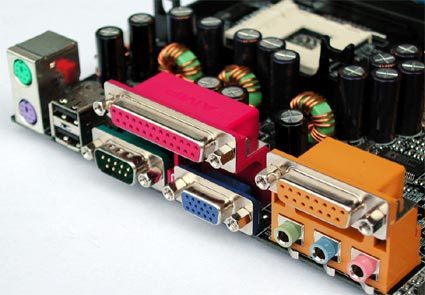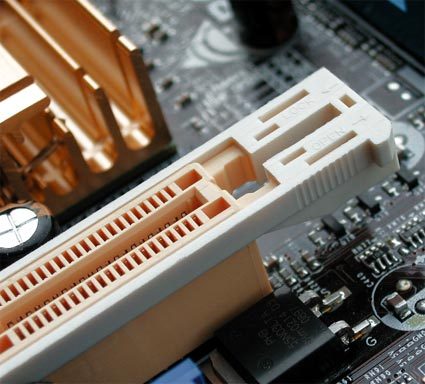The End User Pays: 13 Boards With Intel 845GE/PE
Biostar P4TGE: A Colorful Package With FSB Tricks, Continued
A glance at the connector side of the Biostar.
Serial ATA and RAID with the help of the Promise controller.
The settings of the Front Side Bus deserve some criticism. It is factory-set to 135.79 MHz and so pushes the board toward the leaders in the benchmark test results. In principle, the manufacturer is trying to create a competitive advantage by not configuring the FSB speed to run at the specified speed of 133 MHz. In addition, Biostar offers a tool called WarpSpeeder. Under Windows XP, it allows the user to modify both the FSB speed and the CPU core voltage. That said, no test was possible in the THG lab because after a system reboot, the small program caused a general protection fault. That only leaves our comments for the manufacturer: for reasons of fairness to its competitors, the FSB speed should in future run according to the specification. An important argument in favor of the Biostar is its appealing price, which means that selected OEMs can calculate tightly. Because of the factory-set overclocking on the FSB, the benchmark results often put Biostar in first place, if the DDR355 tests are not included in the equation.
Prevents the AGP card from tipping out: Biostar's colorful slide guard.
Below the belt: using dubious methods, Biostar tries to get to the top by setting its FSB speed at 135.8 MHz in the factory. Asus, meanwhile, has learned from the past!
Nothing doing: the WarpSpeed tool won't run under Windows XP.
Get Tom's Hardware's best news and in-depth reviews, straight to your inbox.
Current page: Biostar P4TGE: A Colorful Package With FSB Tricks, Continued
Prev Page Biostar P4TGE: A Colorful Package With FSB Tricks Next Page DFI NB78-HL: Meager And Low-priced



